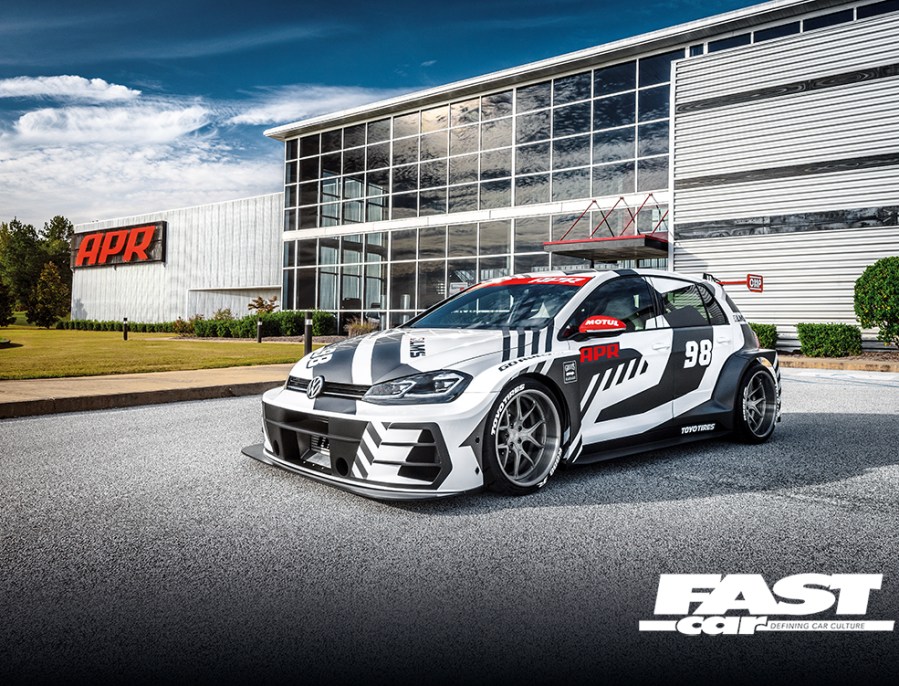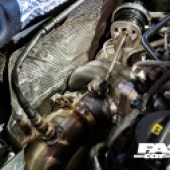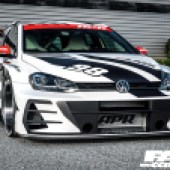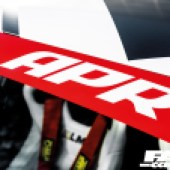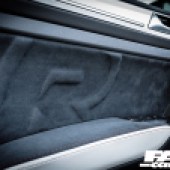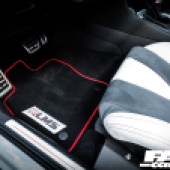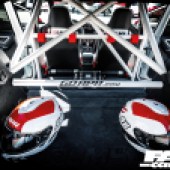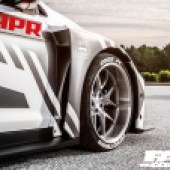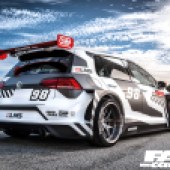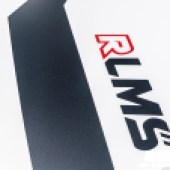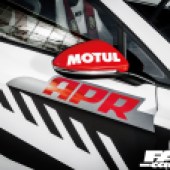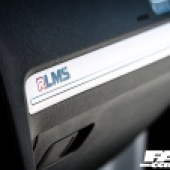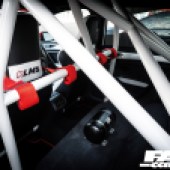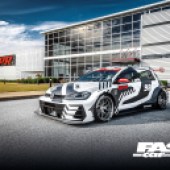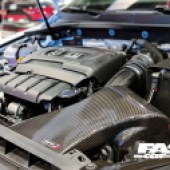The APR VW Golf R might look like it’s fresh off the TCR series grid but, without the limits of FIA regulation, it’s a road-legal machine that can run rings around the thoroughbred touring cars that inspired it.
Squint a little and it’s not hard to picture a grid of touring cars as a pretty good indication of how tough their road-going counterparts could look with a little work. No wonder, then, that for decades it’s had a lot to answer for in influencing enthusiasts builds the world over – at times making the most dull and worthy rep-movers fair game. Rallying aside, you’d have to look hard for a works-level motorsport that’s had a more direct effect on tuner culture than the world’s many touring car series.
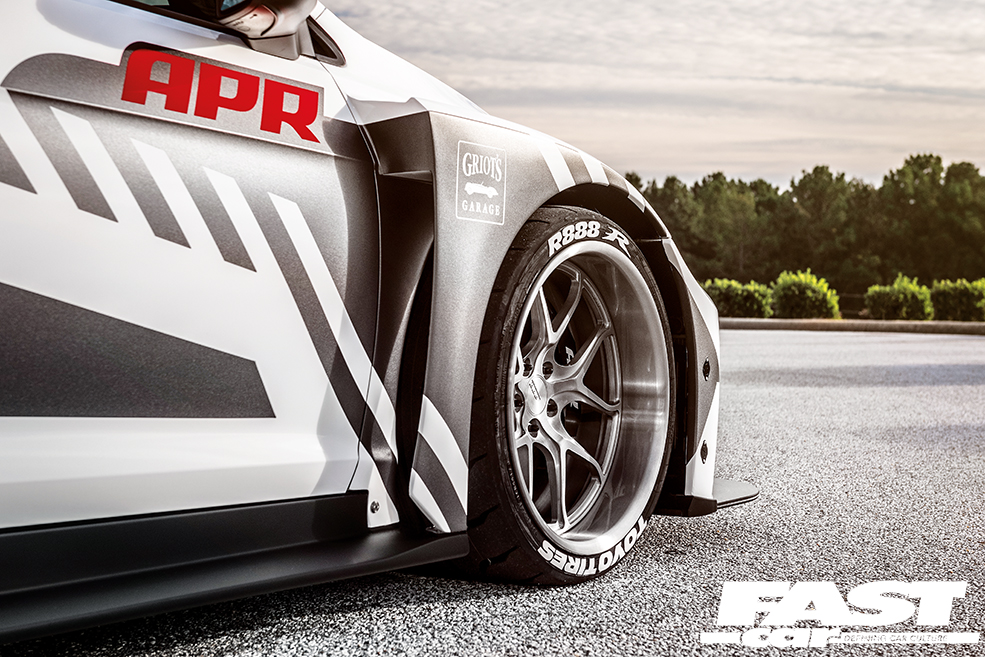
Today, there’s a new reason to be interested. The Touring Car Racing (TCR) specification was introduced in 2015 and, in relative terms, it’s made the upper echelons of the sport a little more accessible. Instead of the limitless budgets of manufacturer-backed works operations, these are privateer teams in series-built cars, developed from production bodyshells and delivered off the line ready to race. While the latest hot hatches ramp up the performance arms race on the road, TCR takes those base cars and dials everything up a notch for the track. What’s not to love?
Well… perhaps a helping of FIA regulations to rein it all in. For all the swollen bodywork, bare metalwork and aero, the limits are fairly tame by road car standards – the Golf GTI TCR comes in at 350bhp, and that’s still put through the front wheels. For Audi, the TCR-ready RS3 LMS is a cylinder, a half-litre of cubic capacity, and a pair of driven wheels down compared to the much tamer-looking road-going RS3 saloon. So, what if you could mix the best of both worlds – a weapons-grade, road-legal hot hatch, with the best bits of its touring car equivalent? Well, you’d probably have something like APR’s latest creation. And we’d say that’s no bad thing.
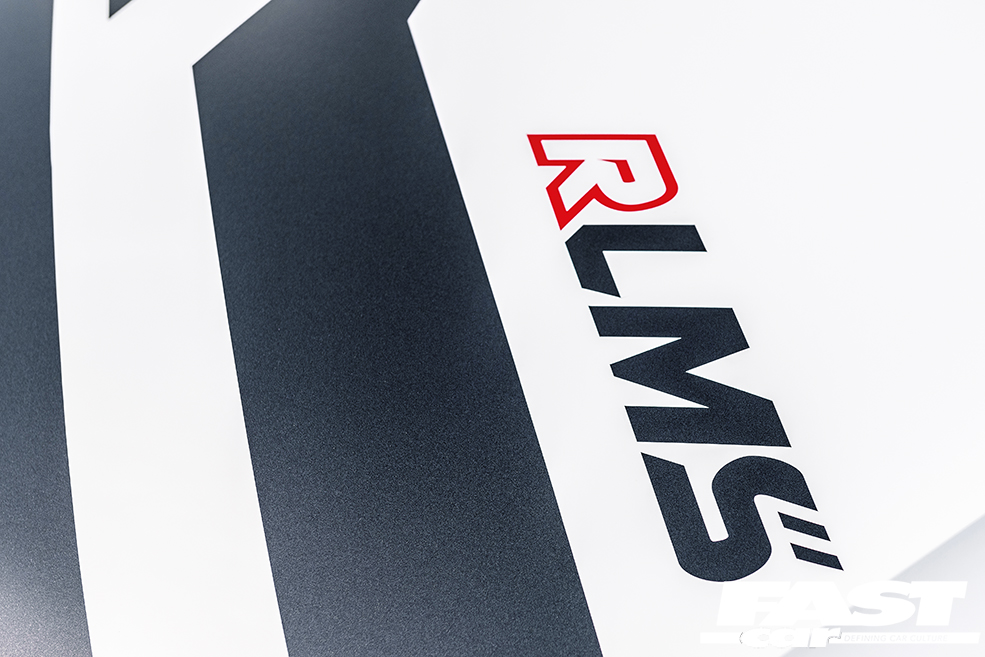
If anyone ought to be able to pull off a build like this, it’s APR. For a little over 20 years, it’s been a household name in boundary-breaking high-performance Volkswagen, Audi and Porsche parts and builds. It’s now based out of a huge 80,000 square-foot facility in Alabama and has links with distributors across the world. Even with that in mind, the coast-co-coast collaboration needed to take this car from showroom to the SEMA Show in six months was no small feat, as marketing team leader, RJ McBride, explains.
“We knew that in order to make something worthy of our booth at SEMA, it had to be a show stopper,” he tells us. “But it also had to be something we could take to the track and other events throughout 2019, to showcase our products and our technical partners. So we drew upon our comprehensive experience with the Golf R platform, which is a fantastic base for APR upgrades in power, handling and stance, and there’s no better car to use as an inspiration than the Audi RS3 LMS. Which is where the RLMS name came from.”
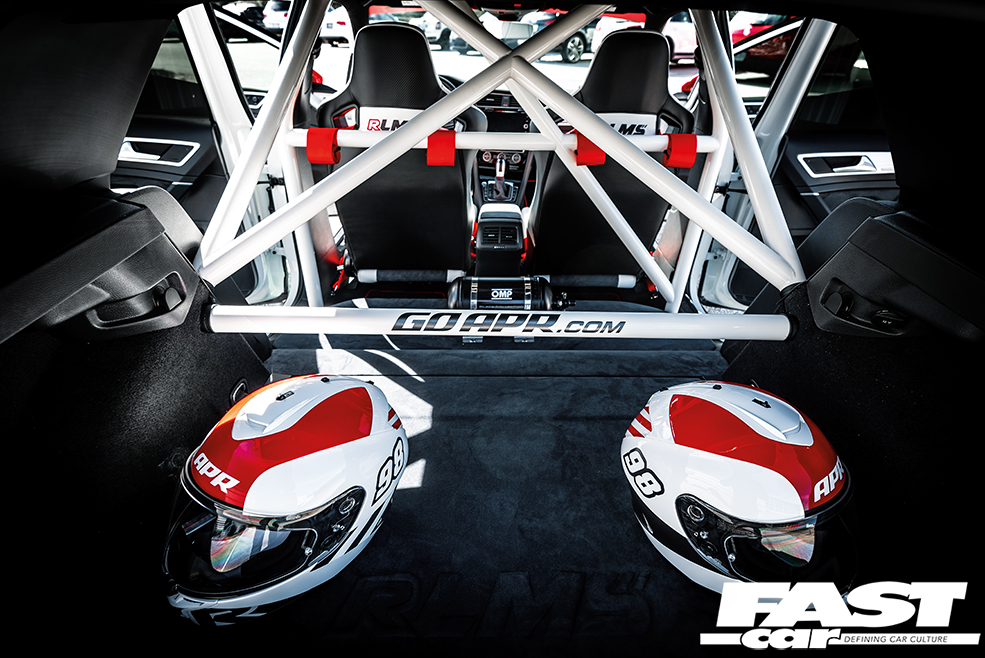
That pairing doesn’t require much squinting to make sense. Audi’s TCR racer is on a production platform, the same MQB architecture that underpins the Mk7 Golf, and APR had its sights set on retaining the stock suspension pickup points, as per FIA rules, so the foundations are pretty similar. The RS3 LMS also uses broadly the same EA288-series 2.0-litre TSI engine as the Golf R, albeit only with front-wheel drive, and it’s available with DSG as an alternative to a sequential ‘box. Again, just like the R.
The fork in the road, of course, is APR had the advantage of artistic licence. It had a need to showcase its most hardcore engine hardware yet, and a desire to keep it as road legal as it was when it rolled out of the showroom last May. Granted, six months is a little slower than Volkswagen’s three-week TCR turnaround time, but the ingredients here are a little better travelled and a lot less easy to come by. And pretty much all of them are now available off the shelf.
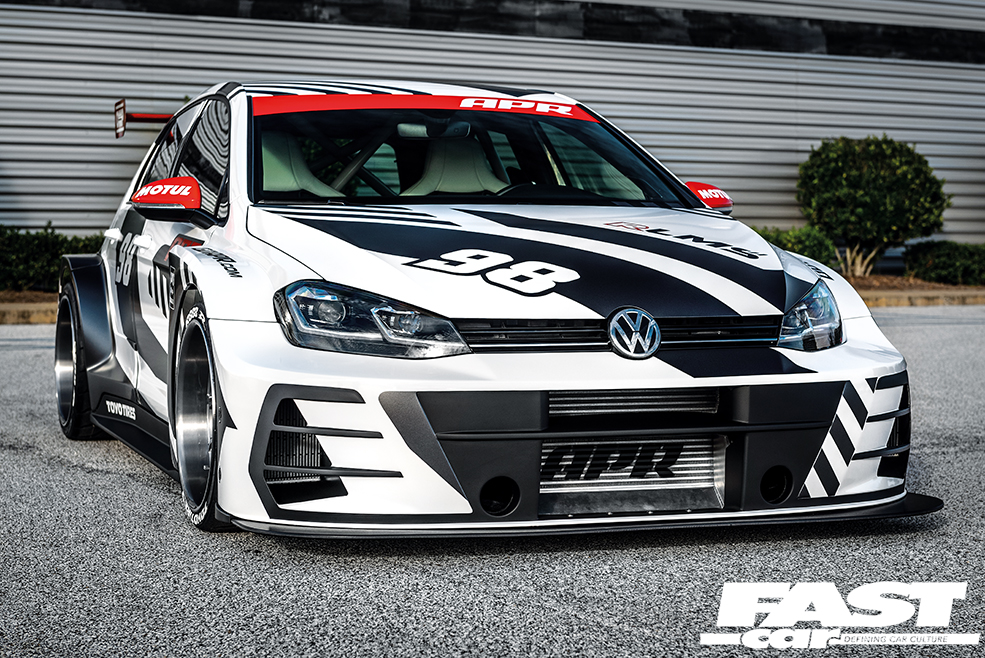
“We’ve approached the build as a two-phase process,” RJ explains. “The first phase was to build it for SEMA, with a focus on the concept and overall design. But we knew time wouldn’t permit us to do the fabrication on the roll cage, interior and bodykit, so we reached out to some of the most highly respected and sought-after craftsmen in our industry to help get the job done ready for the journey to Las Vegas.”
So the Golf had barely turned a wheel under its own power before the tear-down began – shipped over to Hyper Sport Engineering, a 150-mile trailer ride, for the rear bench to make way for a custom roll cage, and then reloaded for an 1100-mile trip to Minneapolis for the rest of the interior work to take place. A reflection on how far APR saw the need to travel for the best quality work. With no need to ruthlessly shed weight it’s surprisingly luxurious inside – embossed alcantara and red-stitched leather based on renderings from Ryan Miller at APR, mixed in with a roll cage, harnesses and fire suppression system. It’s a track car, but it’s one you wouldn’t need to move between events on a trailer. As road-going performance Golfs go, it’s the best of all worlds.
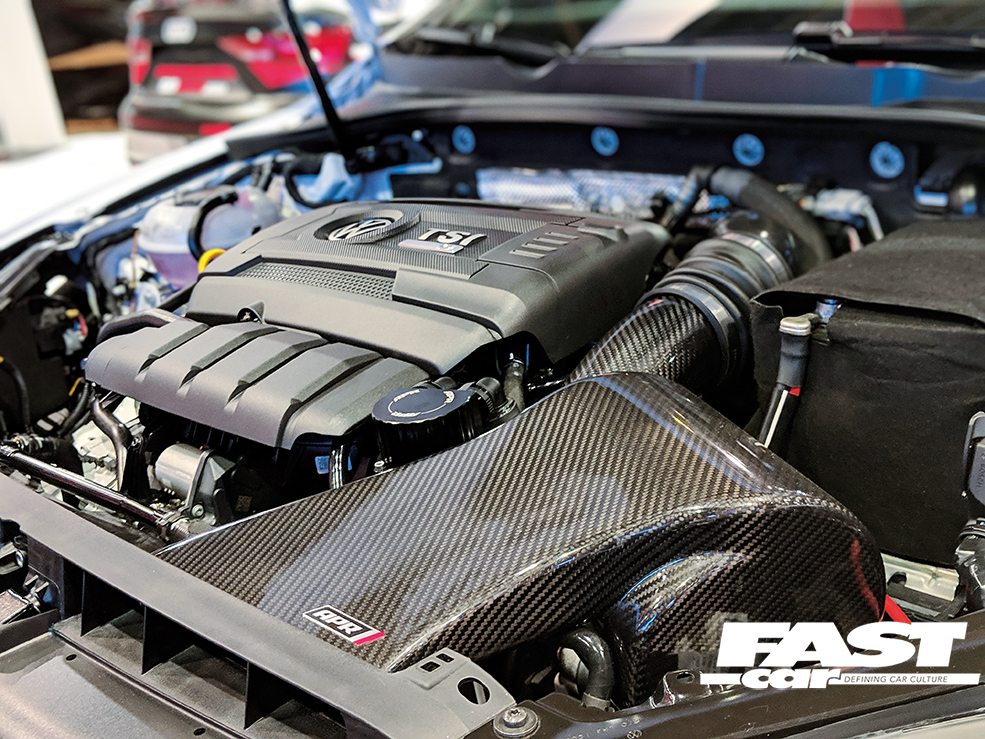
The biggest visual clue to what inspired the concept is that bodykit. Developed with Jase Composites in New York, it’s a hybrid of GTI TCR and RS3 LMS influences built to the same tough standards as the lightweight GRP panels used by Volkswagen’s engineers. This swaps out the front and rear bumpers as well as extending the Golf’s footprint by around 100mm at each corner – almost enough for the arches to become the widest part of the car, extending almost as far from the body as the mirrors. Aerodynamically honed, down to the front splitter with its integrated sump guard and paired with APR’s own fully adjustable rear wing, it’s as close to TCR spec as you get without raiding the parts department at Volkswagen Motorsport. And, if you’ve got a Mk7 Golf and $10,000 burning a hole in your bank account, it’s a fairly straightforward route to genuine touring car presence. Particularly when it’s finished in APR’s distinctive black, grey and red colour scheme.
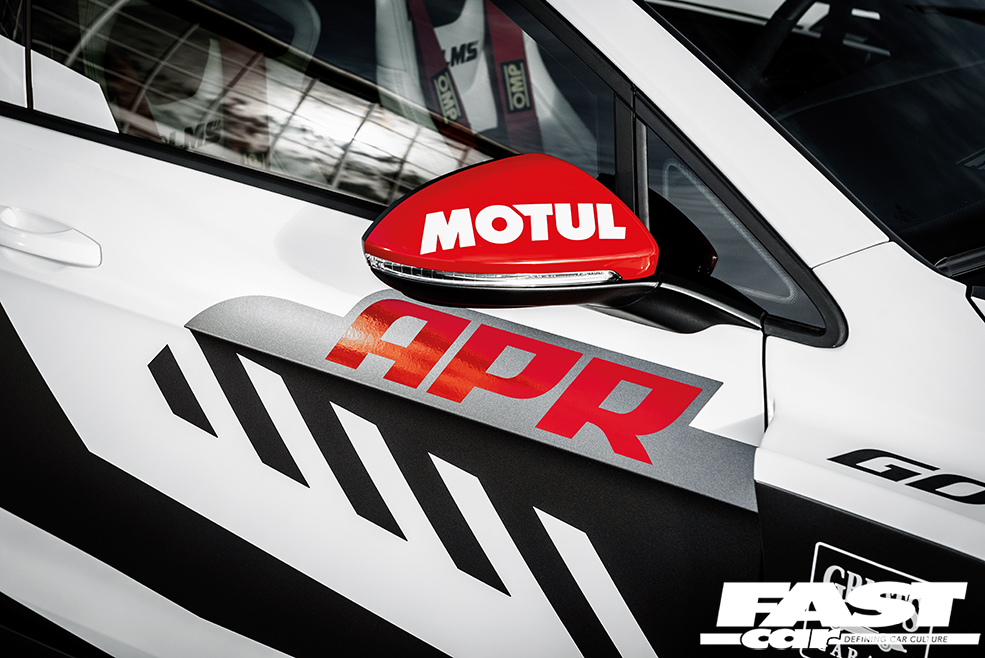
Mechanically, the Golf R was already familiar territory for APR, and the touring car proportions offered up plenty of extra room for a full suite of tried-and-tested chassis hardware. The subframe and transmission mounts are strengthened to take out any movement or distortion under heavy loads, and paired with fully adjustable coilovers and stiffer anti-roll bars to dial out any body roll on track. This car also got APR’s newly-launched big brake kit, larger discs and six-piston calipers which are also 1.6kg lighter than what Volkswagen saw fit to equip it with. All of that gets tucked in behind 10×19″ APR-designed wheels, two-piece forged rims built at Custom Wheel Solutions in California, and wrapped in Toyo track tyres. That pursuit of quality wound up bringing in contacts from six states, spanning the east and west seaboards. And it shows.
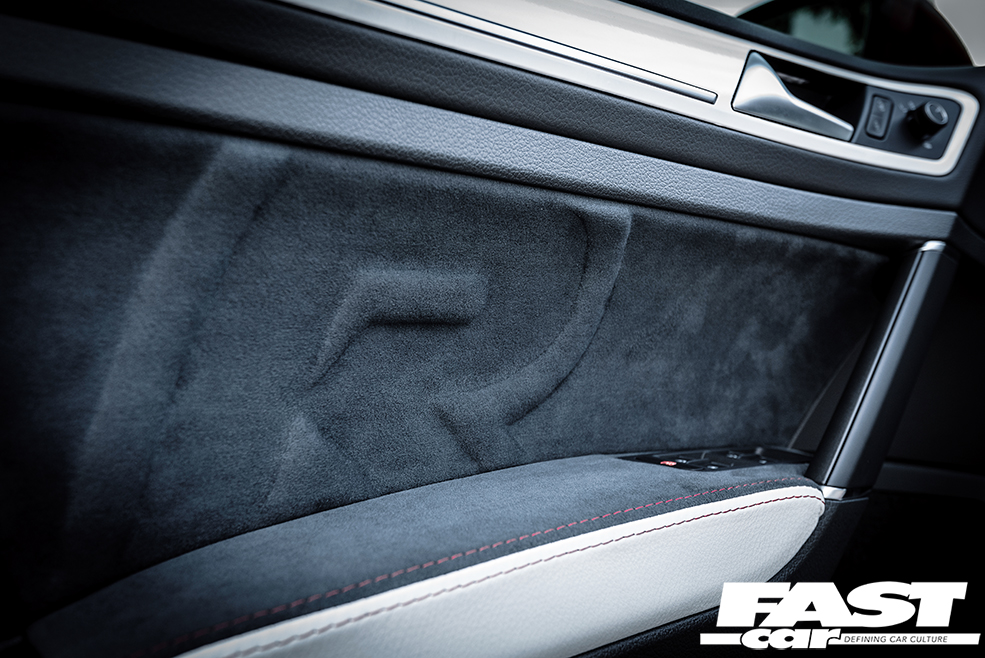
“So much of what we did was about trying to match OE fitment quality and attention to detail, and we didn’t stop until it was done right” says RJ. “The common mindset throughout the build was ‘it’s going to SEMA, and it will be in front of the eyes of our industry’, so just being ‘pretty good’ was not an option. So we had the double challenge of making something that actually performs, but that’s finished to the same standards as a static show car. Not an easy job.”
While the shell was bulked up and moved from state to state, APR’s team back in Alabama got to grips with the centrepiece of the build. The core of which is a blueprinted crate engine, slightly overbored from 1984cc to 2008cc, balanced and built to the finest motorsport-ready tolerances with money-no-object high-performance forged components, all engineered to cope with the company’s lairiest turbo setup yet. The TSI uses a twin-scroll, 71mm BorgWarner turbo, fed by a large carbon fibre intake and paired with an equally generously-proportioned APR intercooler crammed in behind the bumper. It’s a drop-in setup, controlled by a Stage III ECU and with its thirst for premium-grade dinosaur bones, supplied by high-flow pumps and injectors.
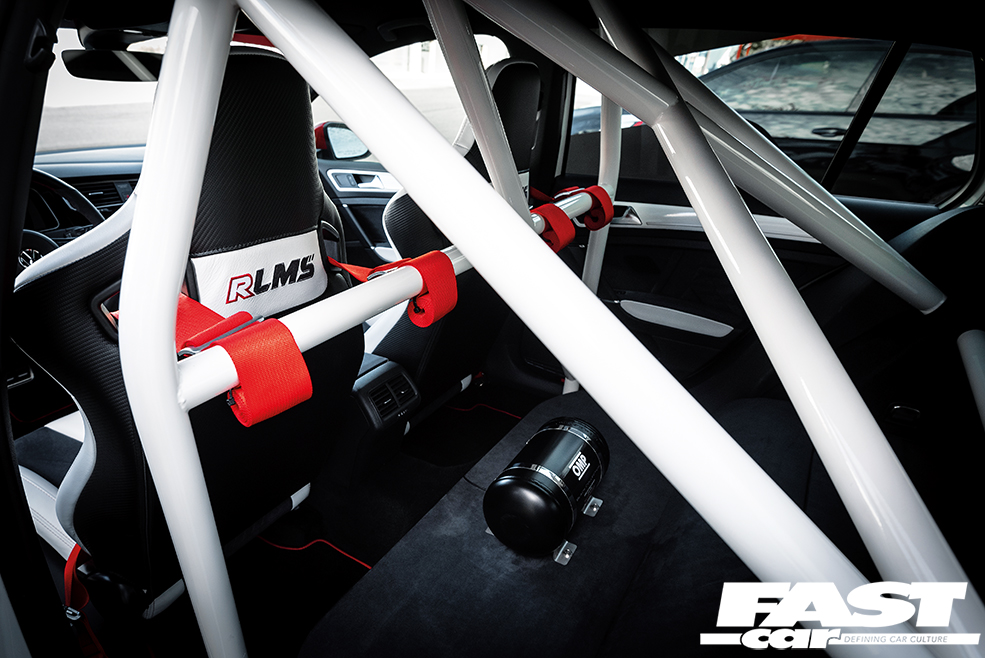
Finished to OE levels of quality, this is no rough-and-ready track car. APR’s cat-back exhaust still has fully-functional noise-controlling flaps at the backbox, and uses a bespoke map for the DSG ‘box. It’s enabled optimised shift points, sharper gear changes and adds launch control, but with all of the factory modes retained for road use. Artistic licence is one thing, but that freedom from trackside scrutineering isn’t an escape from the equal challenge of keeping it both road legal and driveable on the highway. It’s a touring car you could actually use for touring.
Yet, if anything, the dark side of its personality is just as aggressive as anything FIA-approved – if not moreso. Despite the subtlety of the installation, APR’s handiwork, reliably, almost doubles the standard 291bhp to a much more potent 536bhp, with 474lb/ft torque and four-wheel drive ensuring it’s delivered relentlessly, but manageably, and with next to no lag. Lighter than standard, not only can the RLMS put down a 10-second quarter mile pass and reach 140mph 15-seconds faster than the Golf R did from the factory, but it’ll also hang onto each apex with physics-bending aggression once it’s tasked with a circuit. Plus it can cut it with the world’s best show cars at SEMA. APR doesn’t do one-trick ponies, even when the clock is ticking.
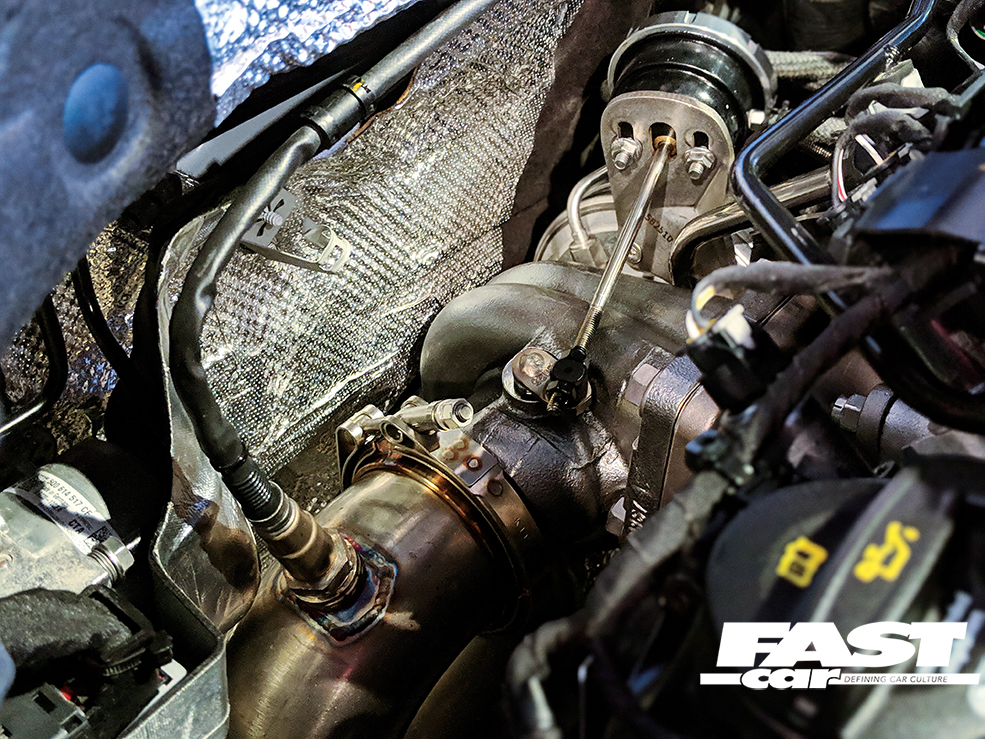
That said, there’s still more to do. Having been named as one of the Toyo Tires Top Builds at SEMA, the Golf is having a brief winter pause with a stint at America’s Car Museum in Washington state, as part of a display of tuner culture, but 2019 is looking almost as busy as its first few months out of the showroom. Alabama’s warm climate means there’s no need to slow down on development, with January and February weather plenty good enough for the start of phase two track testing. And, by the end of the year, it should have ironed out the final details during a programme of fine-tuning at circuits across the United States.
“Track testing will help us to determine what else is needed,” says RJ. “Specifically, with the power upgrades that were made, we also need to have appropriate suspension tuning to maintain the greatest potential performance in varying conditions. But, considering we completed the build in such a short amount of time, it was testament to the APR team working together that we overcame a lot of the teething problems during the build. Phase two should unlock even more of that performance.”
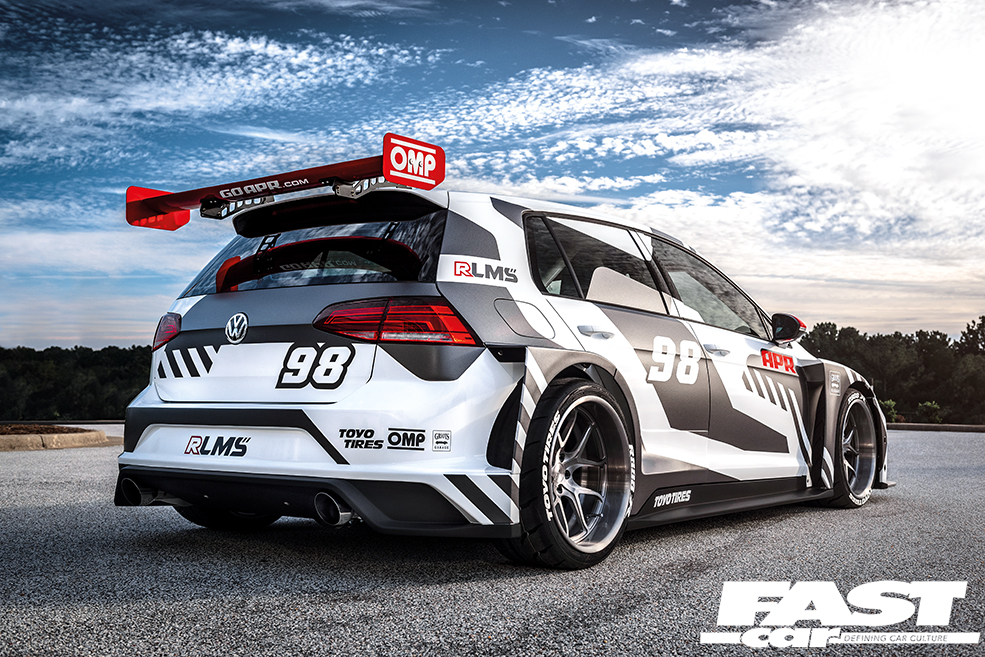
The added benefit here is APR can put all it’s learnt that APR can put back into customer builds – from mildly breathed-on performance cars to full-blown track projects closer in concept to this one.
The world of touring cars, it seems, is just as capable of inspiring enthusiasts as it always has been. But this no-holds-barred Golf means those with the budget and the balls to make it happen probably don’t need to squint too hard to imagine it translated into road-legal reality. What’s not to love?
Tech Spec: APR VW Golf R
Engine:
2.0-litre turbocharged four-cylinder APR crate engine, 2008cc overbore, forged pistons, APR forged conrods, balanced crank, balanced and honed rods, APR stainless valves, ARP 2000 series head studs, APR Stage III+ EFR7163 Turbocharger system, APR carbon fibre intake, APR intercooler and boost hose system, APR boost tap and boost gauge, APR 76mm cast race downpipe, APR valved cat-back exhaust system, APR MPI injectors, APR high and low-pressure fuel pumps, APR Stage III ECU upgrade, APR oil catch can, APR DSG TCU upgrade, APR pendulum mount
Chassis:
10×19″ APR two-piece forged wheels with 295/30 Toyo R888 R tyres, APR Roll-Control coilover suspension system, APR stainless steel dogbone/subframe insert, APR Roll-Control anti-roll bars and end links, APR six-piston brakes with 350x34mm two-piece discs
Exterior:
Jase Composites/APR RLMS widebody kit, Fully adjustable rear wing, APR RLMS livery, tinted windows by Tint One, rear wiper deleted
Interior:
Braum Racing Elite-X seats and stock door cards with custom retrim by Top Stitch Upholstery, Rear seats removed, Hyper Sport Engineering custom roll cage, OMP racing harnesses, OMP fire suppression system
Shout:
Paul Brooker, lead research and development technician, Andy Daugherty, project manager, and RJ McBride of marketing. And, for the extraordinary work, APR fabricators Darcy Gibbs Scott Miller, brand manager Ryan Miller, research and development technicians Tim Wignall and
Adam Coburn
Feature taken from Performance VW. Words: Alex Grant. Photos: APR

